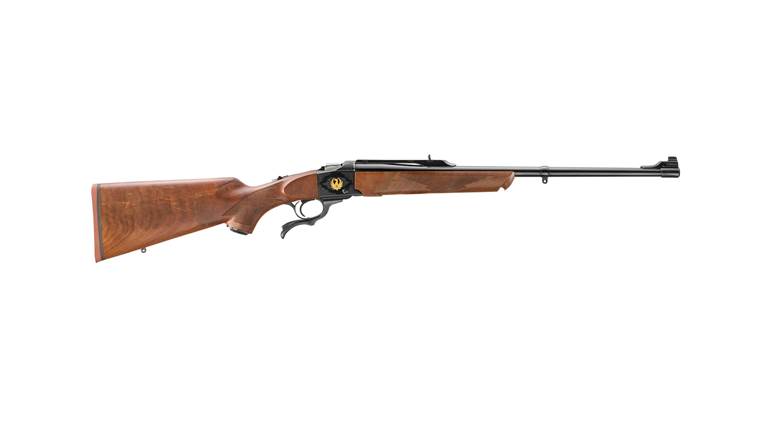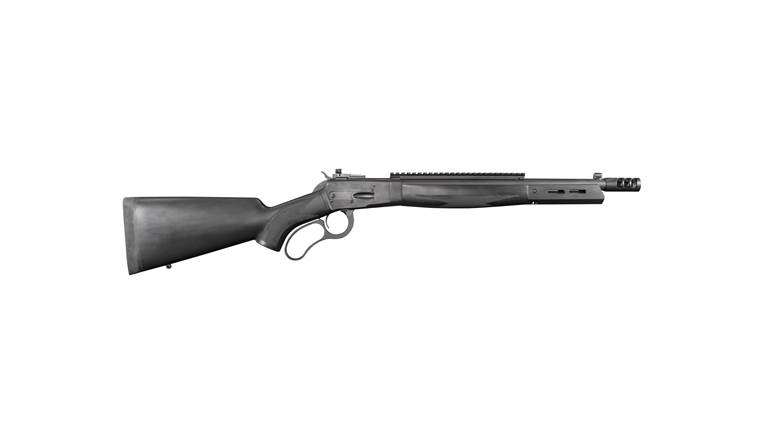
11/13/2012
The birth of the 20th century provided a seminal moment for Smith & Wesson. In 1899, the company introduced its .38 Hand Ejector Military & Police Model revolver, which became the basis for as much as half of the company’s product line. The new frame size—deemed the K-frame—instantly became the most popular revolver for competitive target shooters in its adjustable-sight configuration. According to Roy Jinks in History of Smith & Wesson, the .38 Hand Ejector Military & Police Target models held 24 of 40 all-time records of the U.S. Revolver Association in 1913. The M&P Target had gravitas.
By 1927, Smith & Wesson started getting requests for a .22-caliber, target-style K-frame revolver with the same handling characteristics of the .38. Market researchers discovered a significant demand for a revolver of this type, so the company began development. Production commenced in 1930—just as the Depression began to take hold, which seems like a counter intuitive time to bring out a high-quality handgun at a premium price.
The marketing guys at Smith & Wesson christened the new revolver the K-22 Outdoorsman in 1931, and the moniker stuck. Collectors now refer to it as the K-22 First Model, and knowledgeable shooters with enough money beat a trail toward the K-22, along with military and police training programs.
Original specs called for a six-shot, K-frame revolver with a 6-inch round barrel, Circassian walnut grips and a Smith & Wesson medallion. Single-action trigger pulls were regulated to be within 3 to 4 pounds. The 35-ounce revolver was guaranteed to shoot within 1 1/2 inches at 50 yards. It was—and remains—one of the classiest revolvers to ever be produced. The last of 17,117 K-22 First Models left the factory on Dec. 28, 1939.
A new, improved model deemed the K-22 Masterpiece replaced the First Model. Those improvements included a shorter, faster action; a new micrometer-adjustable rear sight and a built-in, anti-backlash trigger. Even at $40—an astounding price for a revolver at the time—sales were brisk from the beginning. However, war was on the horizon, and Smith & Wesson had to redirect its resources and production efforts to supplying the Brits with M&P revolvers chambered in .38/200. A mere 1,067 Second Models—the collectors’ nomenclature—were produced in 1940 before all production efforts were transformed to support World War II.
After sequestering the push for worldwide totalitarianism and most of the hostilities ceased, civilian shooters’ thirst for the K-22 made it clear that there was going to be a long-term demand for a top-end rimfire revolver. Carl Hellstrom, hired by the Wesson family in 1939 as shop superintendent, took over as president of Smith & Wesson in 1946 and immediately started implementing some cost-saving practices to the production line, as well as design improvements to individual products. Among those changes were the installation of a ribbed barrel on all K-frame target models—which swelled the weight of the new iteration to 38.5 ounces—with a new micrometer-click adjustable sight that did not have to be polished and was even to the frame, and a new anti-backlash trigger that no longer required the tedious and time-consuming fitting of the first Masterpiece series. The Masterpiece nomenclature was retained, partly because it was popular and enhanced sales and partly because Smith & Wesson truly believed that it had produced a masterpiece revolver.
In 1949, a 4-inch barrel version, the K-22 Combat Masterpiece was introduced. Later it was to be called the Model 18. It was a great little trail gun, but sales paled compared to the 6-inch barrel version, and it was discontinued in 1985.
Throughout the 1950s, several small changes were made to all Smith & Wesson revolvers. The four-screw sideplate became a three-screw sideplate with the elimination of the top screw in September 1955. Model numbers—which were introduced in 1957—began being stamped (17) and extractor rods started getting left-handed threads in December 1959 (17-1). The cylinder stop was also redesigned, eliminating the screw on the front of the trigger guard at the end of 1961 (17-2).
The .22 Winchester Magnum Rimfire (WMR) cartridge came to life in 1959, and Smith & Wesson had a revolver—the Model 48—chambered for it before Winchester could get a rifle to market. Differing from the Model 17 (K-22) only in chambering and a slight increase in bore diameter for better accuracy, and available in 4-, 6- and 8 3/8-inch barrels, the Model 48 was and remains a natural companion revolver for rimfire aficionados.
Any firearm as prolific as the K-22 was bound to have variations. Some became commonplace; others are quite rare. In the Standard Catalog of Smith & Wesson, Jim Supica and Richard Nahas explain some of the variations such as relocation of the rear sight leaf screw in 1967 (17-3). The 8 3/4-inch barrel was introduced in 1958. In 1968, the diamond on the Magna grip panels was deleted. The gas ring was moved from the yoke to the cylinder in 1977 (17-4). The pinned barrel was eliminated in 1982. A in new yoke retention system with a radius stud came about in 1988 (17-5). Two years later a full-length underlug on the barrel was added (17-6). The 8 3/8-inch barrel was discontinued in 1993. Two years after that the frame was drilled and tapped for optics, and minor changes were instituted to the rear sight leaf and the extractor (17-7). In 1996, the six-shot steel cylinder was eliminated in favor of a 10-shot alloy cylinder (17-8).
Another very rare configuration was made in 1975 when 15 copies were built with a nickel finish and a target hammer and trigger. Thirty copies were made in .224 Harvey Kay-Chuck, the predecessor to the Model 53 Jet revolver.
The company emphasized alternative frame materials in the 1990s, especially stainless steel. Adding a 6 to the traditional model nomenclature, the Model 617 came about in 1990. Nine years later came the full-length underlug on the barrel. Barrel lengths ran from 4 to 8 3/8 inches, though the long barrel was discontinued as a catalog item in 2002.
Today, there are five versions of this iconic revolver available. The Model 617 comes in two barrel lengths—4 and 6 inches—and features a 10-shot cylinder. A Model 17 Classic Masterpiece is available on a limited basis. It is made much like the original with a 6-inch barrel and a six-shot cylinder. I used one of these recently on a chisler shoot on the Spur Ranch near Encampment, Wyo. Accuracy was superb, and a lot of the pasture vermin sacrificed their heads to it at ranges we found amazing. There is a Model 48 .22 WMR available with a 4- or 6-inch barrel, and the Performance Center has a Model 647 in .17 HMR with a 12-inch specially contoured barrel fitted with a bipod stud and a red-dot sight.
My own late-1970s-vintage K-22 has been one of my most cherished revolvers, teaching me more about revolver shooting than any of my other cherished wheelguns. Countless chislers, prairie dogs and rabbits—even a few mountain grouse—have fallen to it over the years. Even if you are a dedicated semi-auto shooter, you owe it to yourself to have one of these marvelous Masterpieces in your safe.






































